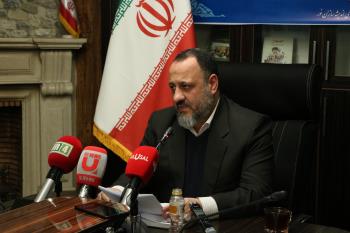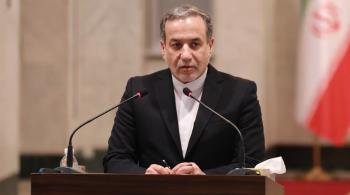Alwaght- Striving to become the world’s top economy, China in recent months hosted important commercial and economic summits and exhibitions to present to the world its major projects. After holding the international Road and Belt Initiative summit last month, these days China is hosting sixth international exhibition on imports and on expansion of relations with Shanghai Cooperation Organization members, with representatives from around the world attending to display their commercial and industrial achievements.
China International Import Expo (CIIE) is a commercial fair held annually in Shanghai since 2018. This exhibition is the first one at a national level on the subject of imports in the world. It started on November 5 and will continue until November 10.
Attendance records were broken in this year’s exhibition, with China hosting representatives from 154 countries, regions and international organizations with more than 3,400 exhibitors and 410,000 professional visitors registered for the event. According to the CIIE office, nearly 200 companies have committed to presence in the exhibition for the sixth year in a row, and about 400 businesses are returning to it after a hiatus of two years or more.
This year’s version of the exhibition is of great importance to China compared to the years before as it is being held in a challenging period full of big developments that include Ukraine and Gaza wars, emergence and expansion of BRICS as a powerful bloc, Chinese-American tensions, and slower global economic recovery, especially that of China.
Also, according to Deputy Minister of Commerce of China Sheng Qiuping, compared to previous yearsl, in this year’s exhibition, the presence of carbon reduction technologies, AI, and other advanced technologies is expected to increase by 30 percent.
In addition, in this year’s exhibition, one can witness the presence of the top 15 global automotive brands, the top 10 industrial electricity companies, the top 10 medical equipment companies, three mining giants, four major grain traders and five big shipping companies. About 1,500 small and medium enterprises are also putting to display their products.
Also, according to Xinhua, in this year’s exhibition, by providing free booths and applying preferential tax policies, the entry of local special products from less developed countries into the Chinese market will also be further facilitated.
Iran’s Vice President Mokhber visit to Shanghai: Iranian companies eyeing presence in Chinese market
7 Iranian knowledge enterprises ATTENDED CIIE to present their products and expand their markets. One of them was a company developing technologies related to nanofibers, including the design and production of electrospinning devices on a laboratory, semi-industrial and industrial scale, as well as cartridge and blower electrospinning systems with various accessories, focusing on the production of masks, power plant air filters, oil filters and cabin air filters and fuel filters, window net, vacuum cleaner dust bags, facial masks and wound dressing.
Companies active in spectroscopic laboratory of the mining industry in the field of designing, manufacturing, producing and supplying electronic equipment for spectroscopic laboratories, mining exploration, fundamental particles based on virtual reality are present in the show event. A well-known company in the field of virtual reality technology, a company that produces and implements practical software, smart devices based on new ideas and creating a reputable brand at the global level also joined the exhibition. A company manufacturing light parallelizers, vibrometers, porcupine cameras, optical surface plotters and laser surface plotters was another knowledge enterprise in Shanghai that put to show its products to the representatives of industrial companies. Actually, this exhibition provides a proper opportunity for Iranian companies’ marketing to get new customers around the world.
It has also provided a good opportunity for Iran, as one of China’s major economic partners in West Asia, to boost trade ties with this world economic power. To this end Mohammad Mokhbar, the vice president of Iran, traveled to China at the official invitation of the Chinese premier to participate in this exhibition. Besides speaking at the opening ceremony, Mokhber held bilateral and multilateral talks for the development of economic relations and marketing for Iranian goods in China and other countries.
In his speech to China-Iran trade summit, Mokhber said that “we are resolved to remove the obstacles ahead of cooperation of Iranian and Chinese companies and pave the way for stable and beneficial business ties for the two sides.”
He went on that the February visit to China of the Iranian President Seyyed Ibrahim Raisi and meeting with President Xi Jinping of China opened a new chapter in the growing Iranian-Chinese relations.
“Undoubtedly, the will and emphasis of the leaders of the two countries on further deepening of bilateral ties has obliged us to mobilize our resources to this end,” he added.
Noting that Iran’s strategic view seeks expansion of relations with neighboring states, BRICS, and members of Shanghai Cooperation Organization and especially China, the Iranian vice president maintained that expansion of economic and commercial relations with neighboring countries and others is based on the precise knowledge of the capacities and advantages of these countries.
He voiced Iran’s readiness to export fisheries and agricultural products to China.
“Private sectors of the two countries should become more active in these fields and promote their cooperation,” he recommended.
Iran’s oil and gas attraction for China
Energy has been the mainstay of the Iranian-Chinese trade in recent decades, with the two sides trying to upgrade their ties in this area to strategic levels. This was a point of emphasis of the Iranian vice president who pointed to Iran’s rich energy reserves in a bid to draw attention of Chinese companies interested to invest in Iran’s energy sector.
“The Islamic Republic of Iran ranks first in the world in terms of total known oil and gas reserves, and ranks seventh in the world in terms of diversity and recoverable reserves, and ranks third if full exploration operations are carried out. We expect the Chinese government to encourage its large oil companies to participate and invest in Iran’s oil and gas projects as large Iranian companies are also fully prepared to export Iranian knowledge-based products to China,” said Mokhber.
China is the world’s largest importer of energy resources. Despite heavy sanctions imposed by the US, China’s demand for Iranian oil has increased since 2018. Kepler, a global monitor of energy market, announced in August that Iran’s oil exports to China have reached a record high in at least a decade, as rallying global oil prices have increased the attractiveness of discounted crude oil. According to Kepler estimates, China imported about 1.5 million barrels of oil per day from Iran in August, which is the highest since 2013. According to Bloomberg, Iran has increased its oil exports this year because it has become stronger geopolitically, and most of its oil shipments are headed to China.
According to a Bloomberg report, Iran’s oil and gas condensate exports in August increased by 54 percent compared to January, to 1.85 million barrels per day, with China buying 80 percent of Iran’s oil.
In recent years, Iran and China have boosted the level of their relations in all fields, and these relations boost is clearly visible in the framework of the Shanghai Cooperation Organization. With Iran’s full membership in this bloc, Tehran has turned to using China’s weight to neutralize sanctions and confront American unilateralism, de-dollarization in trade, and reopening financial and investment resources.
So, should Chinese companies return to Iran’s energy sector and invest in this vital sector, these resources would play a key role in the future regional and international developments led by China and Russia.
Since the emerging countries of the East are looking to build a new world order with a multipolar structure and the preparations have already been made to this end, in coming years energy-rich countries will play a central role in this new order. This is why the Chinese are focusing on Iran and the Persian Gulf Arab states.
25-year comprehensive agreement, the backbone of Iranian-Chinese cooperation
In recent years, Iran has prioritized the East, headed by China and Russia, to counter the US-led Western sanctions. The 25-year comprehensive agreement, signed in March 2021 and worth $400 billion, provides a roadmap for partnership in oil, gas, petrochemicals, renewable energy, nuclear energy, tourism, transit, trade, and railway sectors.
Although no serious action has been taken by the Chinese to implement this agreement yet, the course of global developments has made Beijing officials determined to implement it. China, with the assets of its banking sector, is the magnet attracting foreign investment and an important country directing foreign investors to invest in partner countries, and it is of interest to Tehran because of having the largest foreign exchange reserves.
A report by Silk Road Briefing suggests that China is the fourth biggest investor in Iran and invested about $2.5 billion in Iranian economy from June 2022 to the same month in 2023. Apart from the 150-percent growth of Chinese investment in Iran in 2022, some Iranian sources believe that China will invest in Iran some $16 billion in the form of finances. Also, during 2022, the interest of Chinese companies to enter the Iranian market and the contracts signed between the two countries on joint projects have grown properly. With the agreements made during the President Raisi’s visit to China, the path to the implementation of the comprehensive agreement has become smoother.
China’s customs announced that the trade between Iran and China in the first three quarters of 2023 reached $10.79 billion, decreasing12 percent compared to the same period last year. Trade between the two countries in the months of January to September 2022 were announced to be $12.3 billion. However, the two countries try to bolster their trade volume to $30 billion and beyond.
Railway corridors development
In addition to the energy, one of the most important aims that leads China and Iran to greater cooperation and convergence is the development of transit corridors, which has been seriously pursued by the leaders of both sides in recent years.
In this connection, Mokhber in part of his speech to China-Iran trade summit described Iran’s territorial and strategic position “unique” concerning North-South and East-West corridors.
“Should the infrastructures are invested in and completed, many countries in the world, from Southeast Asia to Europe and neighboring countries, can enjoy their benefits, and given coasts of the Caspian Sea, the Persian Gulf, and the Sea of Oman and the outlook for maritime trade, creation of wealth, jobs, production, and imports are possible.
Having in mind that China is resolved to conclude the Road and Belt megaproject, it desperately needs help of such countries as Iran. Part of the project’s railway corridor crosses Iran that is a linking ring between the East and West due to its strategic position of which the Chinese are aware. Iran has a strategic position along the old Silk Road, and it seems that China considers it as the route of choice to access the Middle East, Central Asia, and the Caucasus. Beijing looks focused on building its own innovative infrastructure, including logistics centers, in Tehran-Mashhad high-speed railway and the improvement of Imam Khomeini International Airport.
To consolidate their geopolitical ties, China and Iran need to deepen their economic cooperation and improve their communication channels. At the same time, they should exercise caution and foresight to ensure long-term stability and remove the potential concerns about regional security. Given Chinese diversification policy, Tehran has a considerable potential for helping secure Beijing’s energy security, and although Western sanctions present themselves as an obstacle in this course, they can be removed with Chinese investments in Iranian economy and increase in oil purchases from Iran.



























